#National Museum of Antiquities and Islamic Art
Explore tagged Tumblr posts
Text
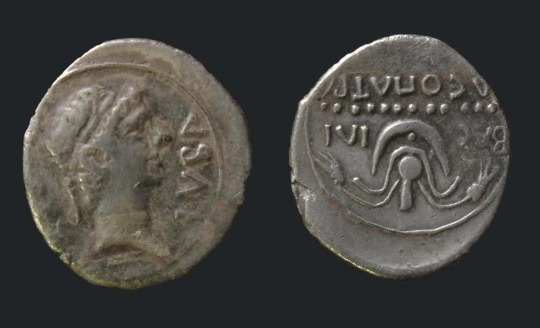
Coin of King Juba II. Numidia. 30-25 BCE.
Musée National des Antiquités & des Arts Islamiques (National Museum of Antiquities and Islamic Art). Algeria.
#Juba II#ancient culture#ancient history#National Museum of Antiquities and Islamic Art#numidia#Algeria#Algerian#Africa#african history#history#black history#art#culture#currency#Numidian
25 notes
·
View notes
Text

Jacques-Albert Senave - Copyist in a gallery of the Louvre -
oil on panel, height: 28.5 cm (11.2 in); width: 36.2 cm (14.2 in)
Louvre Museum
The Louvre or the Louvre Museum is a national art museum in Paris, France. It is located on the Right Bank of the Seine in the city's 1st arrondissement (district or ward) and home to some of the most canonical works of Western art, including the Mona Lisa and the Venus de Milo. The museum is housed in the Louvre Palace, originally built in the late 12th to 13th century under Philip II. Remnants of the Medieval Louvre fortress are visible in the basement of the museum. Due to urban expansion, the fortress eventually lost its defensive function, and in 1546 Francis I converted it into the primary residence of the French kings.
The building was extended many times to form the present Louvre Palace. In 1682, Louis XIV chose the Palace of Versailles for his household, leaving the Louvre primarily as a place to display the royal collection, including, from 1692, a collection of ancient Greek and Roman sculpture. In 1692, the building was occupied by the Académie des Inscriptions et Belles-Lettres and the Académie Royale de Peinture et de Sculpture, which in 1699 held the first of a series of salons. The Académie remained at the Louvre for 100 years. During the French Revolution, the National Assembly decreed that the Louvre should be used as a museum to display the nation's masterpieces.
The museum opened on 10 August 1793 with an exhibition of 537 paintings, the majority of the works being royal and confiscated church property. Because of structural problems with the building, the museum was closed from 1796 until 1801. The collection was increased under Napoleon and the museum was renamed Musée Napoléon, but after Napoleon's abdication, many works seized by his armies were returned to their original owners. The collection was further increased during the reigns of Louis XVIII and Charles X, and during the Second French Empire the museum gained 20,000 pieces. Holdings have grown steadily through donations and bequests since the Third Republic. The collection is divided among eight curatorial departments: Egyptian Antiquities; Near Eastern Antiquities; Greek, Etruscan, and Roman Antiquities; Islamic Art; Sculpture; Decorative Arts; Paintings; Prints and Drawings.
The Musée du Louvre contains approximately 500,000 objects and displays 35,000 works of art in eight curatorial departments with more than 60,600 m2 (652,000 sq ft) dedicated to the permanent collection. The Louvre exhibits sculptures, objets d'art, paintings, drawings, and archaeological finds. At any given point in time, approximately 38,000 objects from prehistory to the 21st century are being exhibited over an area of 72,735 m2 (782,910 sq ft), making it the largest museum in the world. It received 8.9 million visitors in 2023, 14 percent more than in 2022, but still below the 10.1 million visitors in 2018, making it the most-visited museum in the world.
Jacques-Albert Senave (1758–1823) was a Flemish painter mainly active in Paris during the late 18th and early 19th centuries. He is known for his genre scenes, history paintings, landscapes, city views, market scenes and portraits.
31 notes
·
View notes
Text

Local Artist “Igor” Talks about the CYCLE of a Self-Employed Artist
With a singular name, Igor didn’t quite need an introduction at our last Creative Mornings gathering of the year, but he got one anyway. The reception reflected the energetic community the local artist has helped build; with more than 75 excited guests piling into The Garage, this was our best-attended morning yet!
Growing up in Delaware, Igor was inspired by car culture and by the arts, but he never imagined those two worlds would one day collide.
In the 1980s, Igor became a professional roadie for a metal rock band based in Ocean City, Md., It was in Ocean City that Igor would join the iconic 17th Street Surf Shop as a visual merchandiser, spending a decade working as a creative within the East Coast surf culture and eventually relocating to Virginia Beach.
After more than a decade designing window displays, Igor began searching for his next opportunity. “I knew I had to widen my horizons, but taking that leap was scary.” Encouraged by friends, Igor decided to pursue his pinstriping “hobby” full-time.
Two decades later, Igor has handpainted on motorcycles, helmets, vintage cars, storefronts, murals, banners and more across Virginia Beach and beyond. Ever holiday season, Igor paints hundreds of his iconic XXX balls, depicting irreverent, lighthearted sayings or custom messages.
Igor’s intricate pinstriping and funky lettering has also drawn the interest of national brands and celebrity clients, including Bob Ritchie (a.k.a. Kid Rock), with whom Igor has collaborated for more than eight years. Recently, Redbull Music and Gibson Guitars commissioned Igor to paint 14 custom guitars for a notable group of country music artists, including Brothers Osborne and Shaboozey.
One of Igor’s fondest memories has been presenting a guitar to Derek Wells, an award-winning guitar player for the likes of Post Malone. Inspired by Derek’s passion for wrist watches, Igor painted a Rolex Submariner on the Gibson ES, complete with Rolex lettering depicting the musician’s children’s names.
At his studio and eclectic shop located within The Alley in Virginia Beach’s ViBe Creative District, Igor also houses the “World’s Smallest Museum,” a wall-to-wall collection of some of his most cherished oddities. It was in this local creative sanctuary that Igor dreamed up the vision for The Alley’s beloved VB Flea, a curated vintage and antique market. Now in its ninth year, the VB Flea averages 4,000-5,000 visitors and has a growing waiting list for vendors.
“Part of your responsibility as a creative in a smaller community is to take the initiative and make things happen yourself. If you want to get involved, all you have to do is ask.”
In addition to painting, creating and collaborating, Igor relishes his Brazilian jiu-jitsu practice, which he credits with making him a better, kinder and more thoughtful person. In that spirit, giving back is also central to Igor’s artistic work. Each year, he donates artwork to Nashville’s Tomahawn Charitable Solutions in support of military, law enforcement and special forces operators and their families.
When asked why he has stayed in Virginia Beach when his talent could take him anywhere in the world, Igor responds: “VB is too amazing to leave. I’m way too excited to see this creative community continue to grow.”
_
Written by CMVB volunteer blogger Valeria L. Palmertree
Join us every third Friday in 2025 as we explore, along with 236 other cities in 69 countries around the world, 12 new themes in a face-to-face community format. Past themes have included Rhythm, Endurance, Ritual, Reflection and Vision. January’s theme is JOURNEY, and our speaker will be Raeesah Islam of Utopia Feni.
CM also has virtual field trips and a database of previous talks to enjoy and explore at home.
1 note
·
View note
Text
The Ministry of Tourism announces the artifacts that were chosen to be the featured pieces in December in antiquities museums across the country

The Ministry of Tourism conducted a public referendum through its pages on the social networking site Facebook, and the public chose this month a group of artifacts that highlight Egyptian civilization's interest in science, knowledge, and culture in celebration of Science Day, which falls on December 21 of each year. This date also coincides with the opening of Cairo University on the same day in 1908.
The most famous places chosen are the Museum of Islamic Art in Bab Al-Khalq and the Coptic Museum in Old Cairo because it displays a wooden board used to teach writing, carved on it numbers and writings in the ancient Coptic language. The choice also fell on the Al-Gaar Anderson Museum, which contains a metal ink container shaped like a fish. The Muhammad Ali Museum is also one of the most famous sites that were dedicated to spreading science in Egypt, and this museum displays three of the oldest inkwells in Egypt. You can also explore the Amhotep Museum in Saqqara, which displays a statue of the scribe Ptah Shepses, who held several titles, the most famous of which were judge and inspector of the god's priests.
If your flight arrives at Cairo International Airport, you should see the bronze statue of the god of wisdom, medicine, and writing, Thoth. If you are going to visit Alexandria, you should not miss visiting the Alexandria National Museum, which displays the First Class Order of Education. You can also visit the Greco-Roman Museum, which contains a marble statue depicting an intellectual wearing the Greek cloak "himation," which is a symbol of culture. You can visit all these places and more only with Egypt Tours, which will allow you to choose from many exciting tours.
If your ship will stop for some time in any of the Egyptian ports, choose one of Egypt Cruise Excursions, which is a priceless gift for any tourist visiting Egypt for the first time. You can find many tours available that are ideal options for exploring Egypt, such as Port Said Shore Excursions, which will enable you to visit all the famous archaeological sites. Sokhna Port receives millions of tourists every year, so we have organized many excursions from Sokhna Port so that you can choose the tour that suits your interests.
If your ship will only stop for a few hours in the port, you can book a half-day tour to Saqqara and the Dahshour Pyramids from Sokhna to enjoy a wonderful trip in a short time. Egypt is one of the most famous countries that has many amazing museums, so you should join the NMEC and Pyramids Tour from Sokhna Port, which will help you visit one of the most important and impressive museums in Egypt, which is the National Museum of Egyptian Civilization. You can visit many amazing archaeological sites in one tour if you book a Day tour to the Pyramids, Memphis, and Saqqara from Sokhna Port, which is one of the best-selling tours.
You can book Pyramids and Saqqara Desert Tours from Sokhna Port to enjoy exploring the Giza Pyramids and Saqqara area while riding four-wheel-drive bikes. If you are a fan of visiting amazing museums, just join our day tour to the museums in Cairo from Sokhna port to be able to visit the National Museum of Egyptian Civilization and Abdeen Palace. You can take your friends and family on an unforgettable trip by booking the Giza Pyramids and the Step Pyramid tour from Sokhna Port and taking many beautiful souvenir photos with the Giza Pyramids.
You can choose between watching the sunrise or sunset in the pyramids area during the quad bike at the Giza pyramids tour from Sokhna port, which will allow you to see a magical view that you will never forget throughout your life. You will be amazed by seeing the magnificent pyramids with the Sokhna Port to Cairo Pyramids day tour, and you will also be able to see the Sphinx.
@cairo-top-tours
0 notes
Text
9 must-visit destinations for culture lovers in Malaysia
Malaysia, a country steeped in history and diversity, is a cultural mosaic of traditions, art, architecture, and festivals. From ancient temples to colonial-era buildings and vibrant street art, the country offers a wealth of experiences that will captivate culture enthusiasts. Whether you’re drawn to exploring historical landmarks, experiencing local arts, or immersing yourself in traditional customs, Malaysia’s unique blend of cultures will leave you inspired. Here are some of the best destinations for culture lovers to explore in Malaysia.
George Town, Penang
George Town, the capital of Penang, is a UNESCO World Heritage Site known for its well-preserved colonial architecture, traditional shop houses, and vibrant street art. The city’s unique mix of Malay, Chinese, Indian, and European influences creates a fascinating cultural tapestry, making discover it one of the most fascinating things to do in Malaysia. Visitors can explore the numerous temples, mosques, and churches that dot the city, or wander through the streets to discover murals and sculptures that showcase Penang’s rich artistic heritage. A must-visit is the Pinang Peranakan Mansion, which offers a glimpse into the life of the Peranakan Chinese, known for their distinct culture and cuisine.
Malacca
Malacca is a city rich in history, having once been a thriving trade hub under Portuguese, Dutch, and British rule. This historical significance is evident in the city’s architecture and museums, making it a perfect destination for culture lovers. Stroll through the Jonker Street to discover antique shops, art galleries, and traditional eateries. Visit the A Famosa, the remains of a Portuguese fortress, and the Stadthuys, a Dutch colonial building now housing the Malacca History and Ethnography Museum. Malacca’s mix of colonial-era structures and vibrant local culture creates a dynamic and enriching experience for visitors.
Kuala Lumpur
Kuala Lumpur, Malaysia’s capital, is a modern metropolis that also boasts a rich cultural heritage. The city’s multicultural roots are reflected in its diverse neighborhoods, including Chinatown, Little India, and Kampung Baru, each offering a unique cultural experience. Explore the stunning Sri Mahamariamman Temple in Chinatown, the grand Sultan Abdul Samad Building, and the National Mosque (Masjid Negara). Kuala Lumpur is also home to the Islamic Arts Museum, which showcases Islamic art and artifacts from across the Muslim world, offering insight into the region’s deep-rooted spiritual and cultural traditions.
Kota Bharu
Located in the northeastern part of Malaysia, Kota Bharu in Kelantan is known for preserving traditional Malay culture. The city is an excellent place to experience Malay art, crafts, and customs. Visit the Kota Bharu Cultural Centre and the Islamic Museum to delve deeper into the local heritage. The vibrant Siti Khadijah Market is another must-see, offering a wide range of handicrafts, textiles, and local foods. The city’s close connection to Islamic practices and its dedication to preserving local traditions makes it an essential destination for culture enthusiasts.
Ipoh
Ipoh, the capital of Perak state, is a charming city known for its colonial architecture, rich culinary scene, and cultural history. The city’s Old Town is a treasure trove of historical buildings, such as the Ipoh Railway Station and the Darul Ridzuan Museum, which provides insights into the region’s past. Ipoh is also home to a thriving arts scene, with murals and galleries scattered throughout the city. Don't miss the opportunity to explore the local temples, such as the Perak Tong Cave Temple, where you can admire ancient Chinese art and culture. Ipoh’s unique blend of history, art, and food makes it an intriguing destination for culture lovers.
Langkawi
While Langkawi is known for its stunning beaches and natural beauty, it also offers a unique cultural experience. The island’s heritage is deeply influenced by Malay traditions, which can be seen in the Langkawi Craft Complex and the Mahsuri Tomb and Museum, dedicated to the legendary figure of Mahsuri. Langkawi’s rural villages also provide a chance to experience traditional Malaysian village life. For those interested in the island’s maritime history, the Langkawi Maritime Museum showcases the importance of trade and fishing to the region's culture.
Batu Ferringhi, Penang
Batu Ferringhi, located along the coast of Penang, is famous not only for its beaches but also for its strong cultural ties to the local Malay community. The Penang National Park offers a glimpse into the island’s natural history, but the true cultural experience can be found in the traditional Malay village life that still thrives in the area. Local markets and the Batu Ferringhi Night Market provide opportunities to purchase traditional handicrafts and souvenirs, while nearby temples and mosques reflect the spiritual and cultural practices of the Malay people.
Penang Hill
Penang Hill offers more than just panoramic views of the island—it is a cultural haven with colonial-era architecture, British-style bungalows, and traditional gardens. One of the hill’s highlights is the David Brown’s Restaurant & Tea Terraces, where visitors can enjoy a British colonial-inspired tea experience. The Kek Lok Si Temple, one of the largest and most important Buddhist temples in Malaysia, is also located nearby, offering visitors a peaceful escape and a chance to explore traditional Buddhist culture.
The Cameron Highlands
The Cameron Highlands in Pahang is not only a popular escape for nature lovers but also a fascinating cultural destination. The area is home to the Orang Asli indigenous people, and visitors can learn about their traditional way of life at the Orang Asli Village. The highlands also feature charming colonial-era buildings, tea plantations, and strawberry farms, allowing visitors to immerse themselves in a blend of natural beauty and cultural history. The local markets offer traditional crafts and fresh produce, giving you a taste of the region's cultural richness.
0 notes
Text
Top 6 Famous Architectural Buildings in Malaysia
Malaysia is a very interesting country, with a rich heritage of people, customs and beautiful geography. As well as a rich multicultural population, this South-Eastern country offers a great number of architectural marvels that unite the styles of different epochs. Malaysia boasts beautiful architecture, ranging from modern structures like skyscrapers to ancient structures such as landmarks. If you are planning to visit this interesting country, here are the 6 most famous architectural structures in Malaysia you should not miss.
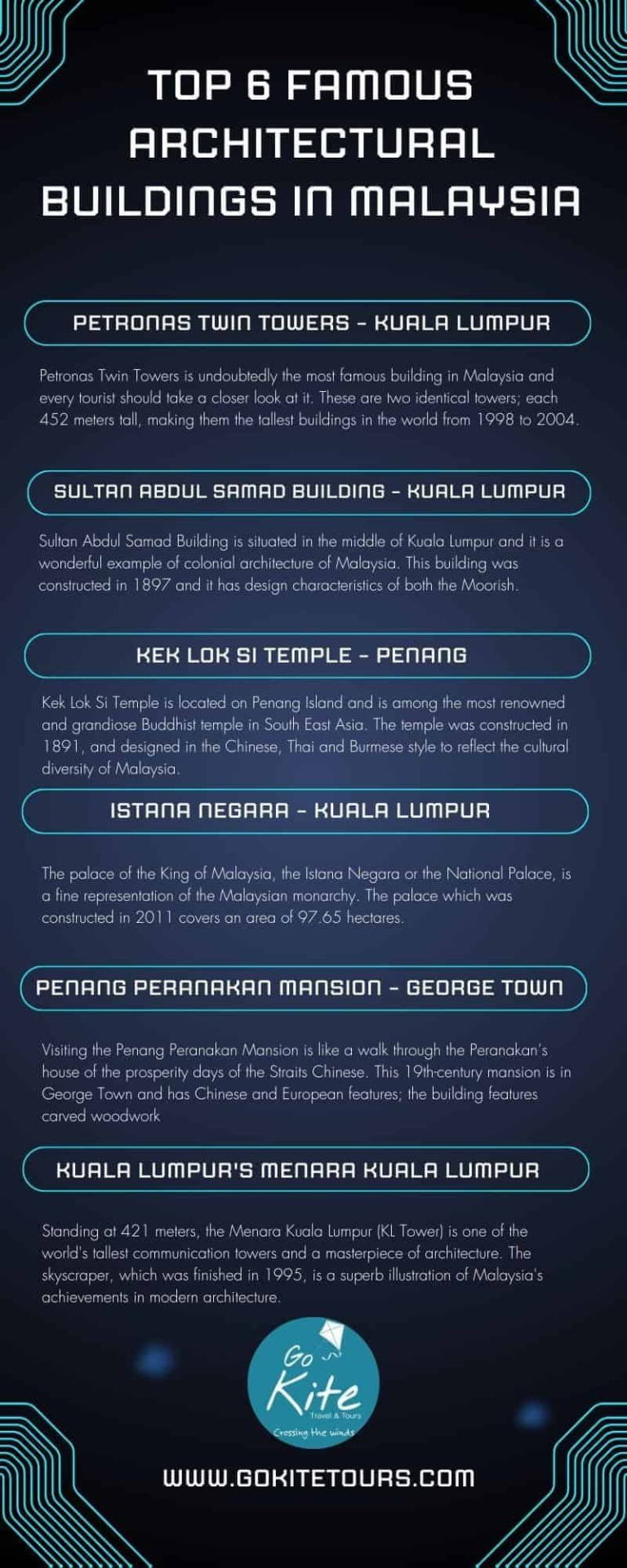
Here is the Top 6 Famous Architectural Buildings in Malaysia
1. Petronas Twin Towers – Kuala Lumpur:
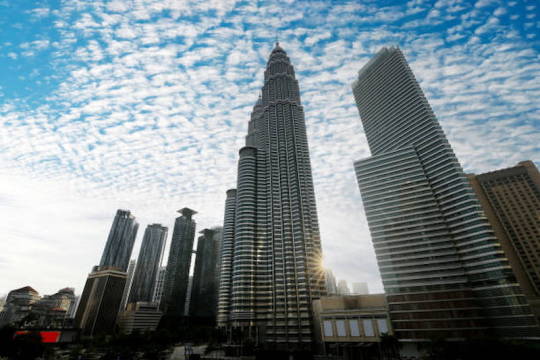
Petronas Twin Towers is undoubtedly the most famous building in Malaysia and every tourist should take a closer look at it. These are two identical towers; each 452 meters tall, making them the tallest buildings in the world from 1998 to 2004. The twin towers were designed by Argentine architect César Pelli and they feature both modern and Islamic art; steel and glass to represent Malaysian technological advancement. Do not leave without crossing the Sky Bridge that links the two towers at the 41st and 42nd floors, where you have a view of Kuala Lumpur.
2. Sultan Abdul Samad Building – Kuala Lumpur
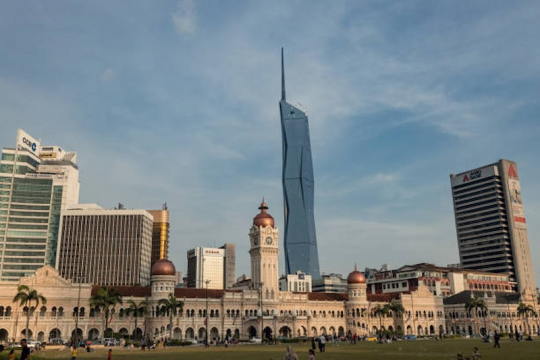
Sultan Abdul Samad Building is situated in the middle of Kuala Lumpur and it is a wonderful example of colonial architecture of Malaysia. This building was constructed in 1897 and it has design characteristics of both the Moorish, Gothic and Western architecture styles. Its clock tower and copper domes are especially prominent and the building is widely photographed, ranking as one of the most photographed in the city. Former British colonial administrative center, it is now home to Malaysia’s Ministry of Information, Communications and Culture.
3. Kek Lok Si Temple – Penang

Kek Lok Si Temple is located on Penang Island and is among the most renowned and grandiose Buddhist temple in South East Asia. The temple was constructed in 1891, and designed in the Chinese, Thai and Burmese style to reflect the cultural diversity of Malaysia. One of the major attractions is the seven-tiered Pagoda of Ten Thousand Buddhas which leads to the top of the hill where visitors get to enjoy the breathtaking view of Penang. There are many halls, gardens and shrines inside the temple and all of them depict the architectural features of Buddhist culture.
4. Istana Negara – Kuala Lumpur
The palace of the King of Malaysia, the Istana Negara, or the National Palace, is a fine representation of the Malaysian monarchy. The palace, which was constructed in 2011 covers an area of 97.65 hectares and has architectural elements of Malay and Islamic architecture. With golden domes, large gardens and carved wooden panels, it is an impressive building that represents the majestic Malaysia Royal family. Unfortunately, you can’t actually go into the palace but there is a royal guard march past that resembles the British monarchy.
5. Penang Peranakan Mansion – George Town
Visiting the Penang Peranakan Mansion is like a walk through Peranakan’s house Chinese Stratits. This 19th-century mansion is in George Town and has Chinese and European features; the building features carved woodwork, colorful tiles, and antiques. The building is now a museum, which showcases the Peranakan culture from the exterior and interior architectural designs. It is essential to visit anyone interested in Malaysian cultural heritage.
6. Kuala Lumpur's Menara Kuala Lumpur (KL Tower)
Standing at 421 meters, the Menara Kuala Lumpur (KL Tower) is one of the world's tallest communication towers and a masterpiece of architecture. The skyscraper, which was finished in 1995, is a superb illustration of Malaysia's achievements in modern architecture. Islamic elements are included into the tower's design, signifying the nation's cultural heritage. Take the elevator to the observation deck for sweeping views of Kuala Lumpur, or enjoy a genuinely unique dining experience in the rotating restaurant.
Conclusion:
Malaysia's architectural scene combines creativity, tradition, and history. Every building in Malaysia tells a different tale, whether you're more drawn to the Sultan Abdul Samad Building's rich cultural history or the contemporary Petronas Twin Towers. Not only are these top 6 iconic structures in Malaysia's architectural landscape, Malaysia Visa also serve as windows into the nation's past, present, and future. On your next trip, make sure to explore them and take in Malaysia's architectural marvels.
0 notes
Text
A Guide to the Best Cultural Tours in Qatar
Qatar, a small but culturally rich nation in the heart of the Arabian Peninsula, offers visitors a unique blend of modernity and tradition. From its bustling souks to its world-class museums, Qatar is a treasure trove of cultural experiences waiting to be explored. Whether you're a history enthusiast, an art lover, or simply curious about the region's heritage, this guide will introduce you to the best cultural tours in Qatar that promise to deepen your understanding of this fascinating country.
Museum of Islamic Art (MIA) Tour
The Museum of Islamic Art is a cultural gem in Doha, showcasing over 1,400 years of Islamic art from three continents. Designed by the renowned architect I.M. Pei, the museum itself is a masterpiece. A guided tour here will take you through exquisite collections of ceramics, textiles, jewelry, and manuscripts, offering insights into the rich history and artistry of the Islamic world. The museum's serene location on an artificial island allows for breathtaking views of Doha's skyline, making it a must-visit on any cultural itinerary.
Souq Waqif Walking Tour
Souq Waqif, Doha's traditional marketplace, is a vibrant hub of Qatari culture. A guided walking tour through its narrow alleys will immerse you in the sights, sounds, and smells of this lively souk. Explore stalls selling spices, perfumes, textiles, and handicrafts, and discover the rich history behind each product. The tour also offers a chance to interact with local vendors, sample traditional Qatari dishes, and witness cultural performances, making it a perfect way to experience the authentic spirit of Qatar.
Katara Cultural Village Tour
Katara Cultural Village is a testament to Qatar's commitment to preserving and promoting its cultural heritage. This sprawling complex is home to theaters, galleries, and performance venues, as well as a variety of cultural festivals and events throughout the year. A guided tour of Katara will introduce you to its architectural wonders, such as the stunning amphitheater and the ornate Golden Mosque. You'll also have the opportunity to visit art exhibitions, attend musical performances, and learn about Qatar's artistic traditions.
Sheikh Faisal Bin Qassim Al Thani Museum Tour
For those interested in delving deeper into Qatar's history, the Sheikh Faisal Bin Qassim Al Thani Museum is an essential stop. Located in the Al Samriya area, this private museum houses an eclectic collection of over 15,000 artifacts, including antique cars, traditional Qatari clothing, Islamic art, and historical documents. A guided tour will provide fascinating insights into Sheikh Faisal's life and his passion for preserving Qatar's heritage, offering a unique perspective on the country's cultural evolution.
Al Zubarah Archaeological Site Tour
Al Zubarah, a UNESCO World Heritage site, is one of the best-preserved examples of an 18th- and 19th-century Gulf merchant town. Located on Qatar's northwestern coast, this archaeological site offers a glimpse into the country's pre-oil history. A guided tour of Al Zubarah will take you through the remains of the old town, including the fort, residential areas, and markets. The tour provides a fascinating narrative of Qatar's maritime trade history and its role in the pearling industry, making it a must-visit for history buffs.
Qatar National Museum Tour
The Qatar National Museum, housed in the architecturally stunning "Desert Rose" building, offers an immersive journey through Qatar's past, present, and future. The museum's exhibits cover a wide range of topics, from the country's natural history and Bedouin culture to its rapid modernization and vision for the future. A guided tour will enhance your understanding of the exhibits, providing context and stories that bring Qatar's history to life.
Desert Safari and Bedouin Culture Experience
No visit to Qatar is complete without experiencing the desert, which has played a crucial role in shaping the country's culture. A desert safari tour combined with a Bedouin cultural experience offers a unique opportunity to explore Qatar's natural landscape while learning about the traditional lifestyle of its nomadic people. From dune bashing and camel rides to enjoying a traditional Bedouin meal in a desert camp, this tour provides a perfect blend of adventure and cultural education.
Conclusion
Qatar's cultural tours offer an unparalleled opportunity to explore the nation's rich heritage, from its ancient roots to its modern-day achievements. Whether you're wandering through the halls of world-class museums, navigating the bustling alleys of traditional souks, or experiencing the tranquility of the desert, these tours provide a comprehensive and immersive experience. By delving into Qatar's cultural treasures, you not only gain a deeper appreciation for its history and traditions but also contribute to the preservation and celebration of its vibrant cultural landscape. As Qatar continues to evolve, these tours will remain a testament to the enduring importance of cultural exchange and understanding in an increasingly globalized world.
If you're ready to explore Qatar's rich cultural heritage, contact us today to book your tour and experience the best that Qatar has to offer!
0 notes
Text
The Best national museums in Europe
Europe is home to some of the best national museums in the world. These museums are rich in history and culture, showcasing art, artifacts, and treasures from various time periods. Visiting these museums lets you travel back in time and explore different cultures and significant events in human history. One of the most famous is the Louvre in Paris, which houses the Mona Lisa and many other masterpieces. The British Museum in London is known for its vast collection, including the Rosetta Stone and Egyptian mummies.

The Prado Museum in Madrid features stunning works by Spanish artists like Goya and Velázquez. In Vatican City, the Vatican Museums display Michelangelo’s Sistine Chapel ceiling. Amsterdam’s Rijksmuseum is famous for Dutch Golden Age paintings, including works by Rembrandt and Vermeer. Berlin’s Pergamon Museum showcases impressive ancient architecture and artifacts. Florence’s Uffizi Gallery holds renowned Renaissance art, including Botticelli’s The Birth of Venus. Finally, the Acropolis Museum in Athens highlights ancient Greek artifacts with stunning views of the Acropolis. These museums are must-see destinations for anyone interested in art, history, and culture. They offer unique insights into Europe's rich heritage and the artistic achievements of various civilizations.
Here are some of the of the best national museums in Europe.
1.Paris's Louvre:
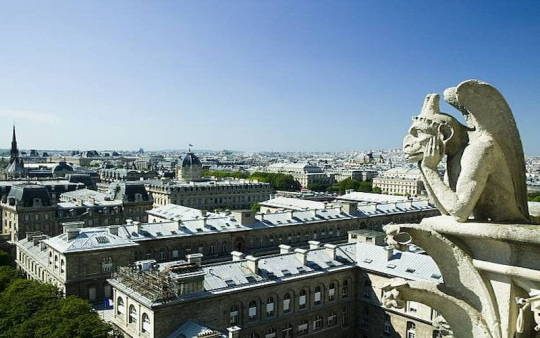
The largest art museum in the world and a recognized historical site is the Louvre in Paris, France. It is well-known for containing Leonardo da Vinci's Mona Lisa. Egypt, Greece, Rome, and Islamic art are among the pieces from ancient civilizations to the 19th century that are part of the museum's collection. The famous glass pyramid entryway to the Louvre is a representation of how contemporary design can coexist with opulent historical architecture. Wandering through its expansive galleries, visitors can linger for hours admiring works of art like the Winged Victory of Samothrace and the Venus de Milo. The Louvre is a must-see location in Europe since it provides an unmatched art and historical experience.
2. London's British Museum:
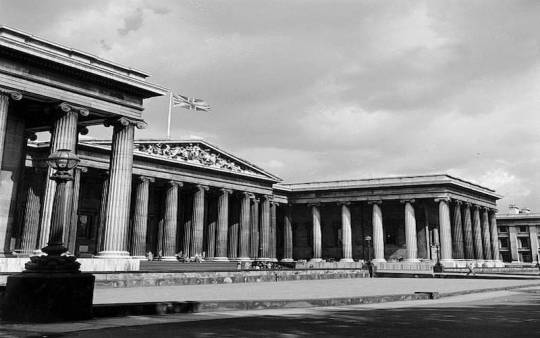
The British Museum, which is situated in London, England, is well-known for its vast collection of antiques and artwork from around the globe. The Elgin Marbles from the Parthenon in Athens and the Rosetta Stone, which were essential to understanding Egyptian hieroglyphs, are among the museum's highlights. With displays spanning all continents, the British Museum offers a thorough perspective on human history. It is a knowledge gold mine that sheds light on the evolution of human civilization. The Great Court, with its breathtaking glass dome and other architectural features of the museum, enhances the tourist experience and makes it an intriguing location to explore.
3. Madrid's Prado Museum:

One of the best art museums in Europe is the Prado Museum in Madrid, Spain, which is renowned for its magnificent collection of European art from the 12th through the early 20th centuries. It includes pieces by well-known artists including Titian, Rubens, and Bosch, in addition to master Spanish artists like Velázquez, Goya, and El Greco. With some of the most significant pieces of art in Western history on display, the Prado's extensive collection offers a comprehensive look into the history of European painting. The neoclassical museum building is situated in a stunning area of Madrid, adding to the educational and aesthetic benefits of a trip to the Prado.
4. Vatican City's Vatican Museums:

Some of the best-known art collections in the world can be seen at the Vatican Museums in Vatican City. Founded by Pope Julius II in the early 16th century, the museums feature the Raphael Rooms and the Sistine Chapel, which features a Michelangelo ceiling painting. The collections, which showcase the Vatican's position as an arts patron, include everything from Renaissance masterpieces to classical sculptures. With the opportunity to view famous pieces of art in their original settings, the Vatican Museums serve as a tribute to the Catholic Church's rich artistic and cultural legacy.
5. Amsterdam's Rijksmuseum:
The best museum of art and history in the Netherlands is the Rijksmuseum in Amsterdam. It has a sizable collection of paintings from the Dutch Golden Age, including works by Rembrandt, Vermeer, and Hals. In addition, the museum showcases a wide variety of historical items, ornamental arts, and artwork from Europe and Asia. Rembrandt's Night Watch, a sizable and lively group picture that draws thousands of visitors each year, is the most well-known exhibit in the Rijksmuseum. Art lovers should not miss the Rijksmuseum since the museum building itself, with its imposing Gothic and Renaissance architecture, is a piece of art.
6. Berlin's Pergamon Museum:
Remarkable replicas of ancient monumental buildings and archeological artifacts are the highlights of Berlin's Pergamon Museum. The Market Gate of Miletus, the Ishtar Gate of Babylon, and the Pergamon Altar are some of the major sites. Few other museums can compare to the unique perspective these expansive replicas offer on ancient civilizations and the vivid reenactment of history. The museum is a cultural landmark in Berlin, providing visitors with an immersive excursion into the ancient world thanks to its enormous collection of Islamic art, Middle Eastern antiques, and classical antiquities.
Conclusion
In conclusion, Europe's national museums are a treasure trove of art, history, and culture, making them essential stops on any Europe tour package. Each museum offers a unique glimpse into the past, showcasing priceless works of art, ancient artifacts, and cultural treasures from various periods and regions. The Louvre in Paris, with its world-famous Mona Lisa, and the British Museum in London, with the Rosetta Stone, are just the beginning. The Prado Museum in Madrid and the Vatican Museums in Vatican City feature masterpieces that define Western art. Amsterdam’s Rijksmuseum and Berlin’s Pergamon Museum provide deep dives into Dutch art and ancient civilizations, respectively. Florence’s Uffizi Gallery offers a stunning collection of Renaissance art, while the Acropolis Museum in Athens connects visitors to ancient Greece. Including these museums in a European tour package ensures a rich and diverse cultural experience. Whether you're an art lover, a history buff, or simply curious, these museums provide unforgettable insights into the heritage and creativity of human civilization. Exploring these cultural landmarks allows you to appreciate the depth and breadth of Europe’s contributions to world history and art.
1 note
·
View note
Text
10 Top-Rated Tourist Attractions in Mumbai
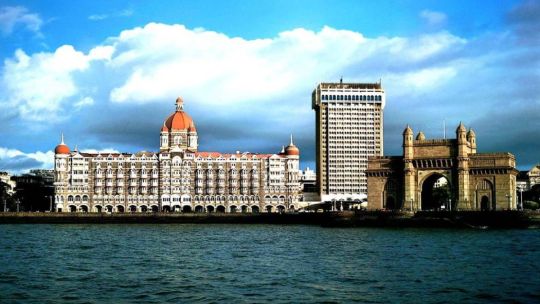
Mumbai, formerly known as Bombay, is a Beautiful city that never sleeps. Here are some of the top-rated tourist attractions in Mumbai:
Gateway of India: This iconic monument is Mumbai's most famous landmark. Built in 1924, it is a popular spot for tourists and locals alike.
Marine Drive: Also known as the Queen's Necklace, Marine Drive is a picturesque promenade along the Arabian Sea. It's a great place for a leisurely walk or to simply sit and enjoy the view.
Chhatrapati Shivaji Maharaj Vastu Sangrahalaya: This museum houses an impressive collection of art, artifacts, and natural history exhibits. It is a must visit for history and culture enthusiasts.
Elephanta Caves: Located on Elephanta Island, a short ferry ride from Mumbai, these ancient rock-cut caves date back to the 5th to 8th centuries. The main cave features intricate sculptures dedicated to the Hindu god Shiva.
Haji Ali Dargah: Situated on an islet off the coast of Worli, this 15th-century Islamic shrine is a significant religious site. It is accessible via a causeway that gets submerged during high tide.
Juhu Beach: One of Mumbai's most popular beaches, Juhu Beach is known for its vibrant atmosphere, street food stalls, and breathtaking sunsets.
Bollywood Studio Tours: Mumbai is the heart of the Indian film industry, commonly known as Bollywood. Several studios offer guided tours where visitors can get a behind-the-scenes look at movie sets and production.
Sanjay Gandhi National Park: Located on the outskirts of Mumbai, this sprawling national park is home to diverse flora and fauna, including leopards and numerous bird species. Visitors can enjoy nature trails, picnics, and the Kanheri Caves, ancient Buddhist rock-cut monuments.
Dharavi Slum Tours: While unconventional, tours of Dharavi, one of Asia's largest slums, offer insight into the daily lives of its residents and highlight initiatives aimed at improving living conditions and fostering entrepreneurship.
Colaba Causeway: This crowdy street market in South Mumbai for shoppers, offering everything from clothing and jewelry to handicrafts and antiques. Bargaining is common here, so do not hesitate to negotiate prices.
These attractions offer a glimpse into Mumbai's rich history, vibrant culture, and diverse landscape, making it a truly memorable destination for travelers. If you are looking to enjoy Mumbai with friends, family, or a group, consider choosing our top-rated Tempo Traveller Rental Services in the city.
0 notes
Text
Archaeological Developments that Rock!
With Amazing archaeological discoveries,that are taking place in iran things are getting much more light,thus providing us more chance of understanding what shaed the land thta is Iran.
Sassanid coin depicting Empress Boran on view at Tehran museum-April 2, 2024
TEHRAN - A significant historical artifact, the Sassanid coin featuring Empress Boran (Purandokht), daughter of King Khosrow II, is now on display at the Money Museum in Tehran
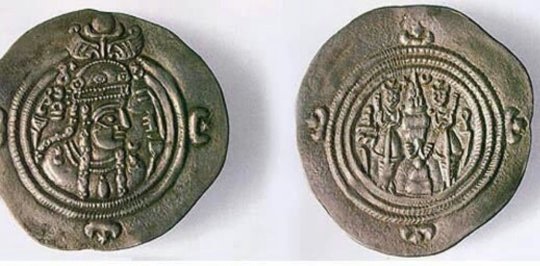
This coin holds immense value as it represents the first official depiction of a female ruler in Iranian history.
In 629 CE, Purandokht ascended to the throne and ruled for a year, during which she authorized the minting of coins bearing her name.
The silver coin depicts Empress Boran in the form of a female figure with intricately woven hair, while the reverse, like other Sassanid coins, features a fire altar with two attendants guarding the flames.
To provide visitors with a better view of the coin, the museum has installed larger images of both the obverse and reverse sides on the walls, allowing guests to easily admire the depiction of Empress Boran.
In about 220 CE, the Sasanian dynasty of Iran introduced the concept of thin flan coins, issues that were struck in relief on both sides. In order not to produce intolerable stresses in the dies, since the thinner the material the more force necessary to make it flow into the recesses of the die’s design, the depth of relief on such coins was of necessity much shallower than with earlier currency. Such techniques spread by way of Byzantium to northern Europe, where the emperor Charlemagne struck thin flan deniers (small silver coins), or pennies, which became characteristic of both his own and neighboring kingdoms.
The Sassanid era saw a general renaissance in the nation’s art and architecture. As scholarship was promoted by the government and many works from both the East and the West were translated into Pahlavi, the Sassanian people’s official language, crafts like metalwork and gem engraving reached a high level of sophistication during that time.
The Muslim conquest of Persia, also known as the Arab conquest of Iran, led to the fall of the Sasanian Empire in ca. 651 and the eventual decline of the Zoroastrian religion. The rise of Muslims coincided with an unprecedented political, social, economic, and military weakness in Persia.
‘Important’ ruins unearthed in downtown Isfahan-April 5, 2024

TEHRAN – Archaeologists have unearthed an array of “important” ruins and centuries-old structures in Isfahan, which was once the capital of Persia during the Safavid era (1501-1736).
The discovery was made in the Zarrin-Kamar passageway situated in downtown Isfahan adjacent to the UNESCO-registered Jameh Mosque of Isfahan, IRNA reported on Thursday.
“The passageway is situated in the heart of the historical fabric of Isfahan, and significant evidence from various historical periods has been discovered within it,” Ali Shojai Isfahani, who presides over the archaeological team, said.
“Archaeological findings unearthed from the Zarrin-Kamar passageway span from pre-Islamic times to the Qajar era.”
Recently, a routine urban dig revealed evidence of two architectural structures. Consequently, that operation was halted, and urban archaeological operations began with an agreement between the Cultural Heritage Research Institute, Isfahan’s Urban Revitalization Organization, and the Art University.
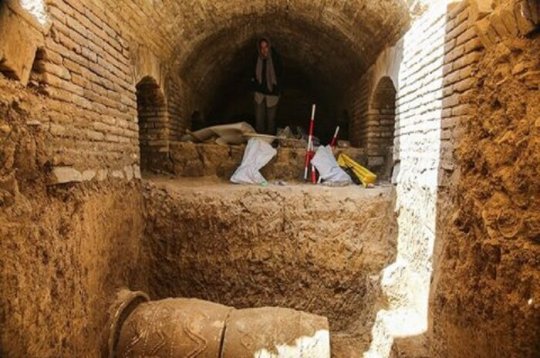
Shojaei Isfahani, referring to the digging of five trenches during the archaeological operation, stated: “Under the sediments of the first trench, evidence of a series of engraved objects (related to irrigation and water supply) were found, which requires further examination to predict their antiquity, but it is likely that these artifacts date back to the period before the Mongol invasion of Isfahan.”
“These engraved objects raise the question of why these water structures were decorated, which needs further investigation.
The archaeologist continued: “It is probable that these water structures were [once] visible and aesthetically pleasing.”
Furthermore, another trench led to the discovery of a kiln, which is of great importance from a historical studies’ perspective, he explained.
“It appears that this kiln was dedicated to baking a specific type of pottery, but there is still doubt in this regard,” Shojaei Isfahani added.
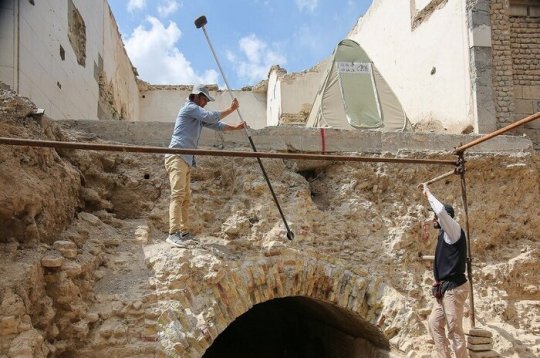
He continued: “The antiquity of this kiln may be attributed to the 7th century, indicating that we are facing an industrial complex on a part of this passageway.”
The archaeologist said: “Another trench led to the discovery of an architectural structure that appears to belong to the late Islamic period.”
“Here, stone walls and brick floors came to light, which requires further examination and research for dating.”
“One of the existing pieces of evidence is that the dimensions of one of the brick floors found in this passage are identical to the dimensions of bricks found in the dome chamber of the Jameh Mosque of Isfahan, suggesting that these structures may belong to the Seljuk period. However, this requires further investigation.”
Isfahan was once been a crossroads of international trade and diplomacy in Iran and now it is one of Iran’s top tourist destinations for good reasons as it is filled with many architectural wonders, such as unmatched Islamic buildings, bazaars, museums, Persian gardens, and tree-lined boulevards. It’s a city for walking, getting lost in its mazing bazaars, dozing in beautiful gardens, and meeting people.
The ancient city is renowned not only for the abundance of great historical bridges but also for its ‘life-giving river’, the Zayandeh-Rood, which has long bestowed the city an original beauty and fertility. Isfahan has long been nicknamed Nesf-e-Jahan, which is translated into “half the world”; meaning seeing it is relevant to see half the world. In its heyday, it was also one of the largest cities in the region with a population of nearly one million.
The cool blue tiles of Isfahan’s Islamic buildings, and the city’s majestic bridges, contrast perfectly with the encircling hot, dry Iranian countryside. The huge Imam Square, best known as Naghsh-e Jahan Sq. (literary meaning “Image of the World”), is one of the largest in the world (500m by 160m), and a majestic example of town planning. Constructed in the early 17th century, the UNESCO-registered square is punctuated with the most interesting sights in Isfahan.
Apart from its cultural heritage gems, Isfahan is home to some heavy industry, including steel factories and a nuclear facility on its outskirts. A top destination when it comes to medical tourism, the ancient city is also home to a gigantic, professional, and state-of-the-art healthcare city, which is a major destination in the realm of medical tourism.
Name Shiraz identified on clay seal of Sassanids, archaeologist says-April 6, 2024
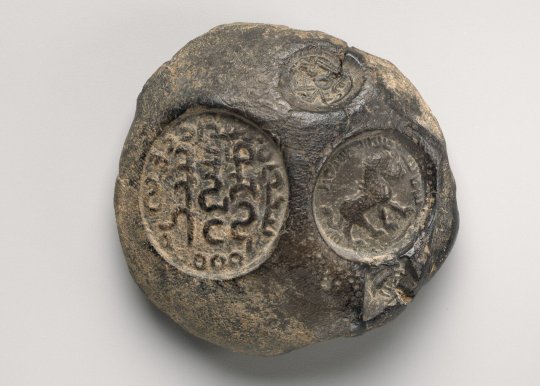
TEHRAN - In a remarkable archaeological revelation, the name “Shiraz” has been identified in Pahlavi script on a Sassanid-era clay sealing.
The finding is important due to cementing the history of Shiraz, which is situated some 60 km south of Persepolis, once the ceremonial capital of the Achaemenid Empire (c. 550–330 BC).
The sealing, excavated near the city of Shiraz at the site of Qasr-e Abu Nasr, is being kept at the Metropolitan Museum of Art in New York.
On Saturday, Iranian archaeologist Mohammadreza Nasab-Abdollahi affirmed to ISNA news agency that the inscription “Mugh-e Shiraz” has been deciphered on these Sassanid clay sealings.
Explaining further, the member of the Iranian Society of Archaeology described such sealings as pieces of clay of various dimensions and shapes, crafted to seal documents and goods. These sealings were imprinted with a seal, leaving an indelible mark on the clay.
“These clay sealings, due to their firing process, have a remarkable durability,” Nasab-Abdollahi added.
He noted that these sealings were unearthed during three seasons of archaeological excavations by experts from the Metropolitan Museum of Art, conducted from 1932 to 1935.
According to Nasab-Abdollahi, archaeological investigations indicate that Qasr-e Abu Nasr in Shiraz exhibits a cultural sequence from the Achaemenid to the Abbasid period, with its primary settlement dating back to the Sassanid era.
“The archaeological findings from Qasr-e Abu Nasr reveal a wide spectrum of administrative systems, techniques, and defensive structures,” the archaeologist remarked.
Furthermore, he emphasized that archaeological evidence from the Sassanid period, including such clay sealings, as well as artifacts from the Achaemenid era such as inscribed bricks from Persepolis, corroborates that the city known today as Shiraz bore the same name in antiquity and was among the significant cities of ancient Iran.
According to the Met Museum, this sealing was impressed with four seals of varying sizes. The imagery on the seals depicts a lion walking right, a monogram, an inscription, and a horned quadruped.
The sealing was among over 500 sealings excavated in the Sasanian fortress at the site of Qasr-e Abu Nasr. The cache was preserved because the building had burned, baking the clay and retaining the seal impressions.
These small clay objects played a role in Sasanian administrative practices. A piece of clay is pressed around a cord to close a document or package and then stamped with a seal. In some cases, these removed sealings seem to have been deliberately stored for administrative purposes.
Excavated by archaeologists from The Metropolitan Museum of Art for three seasons from 1932-1935, Qasr-e Abu Nasr is located near Shiraz in southern Iran at a strategic point at the intersection of defensive mountains, available water sources, and along roads entering the Shiraz plain.
The eastern part of Qasr-e Abu Nasr is a raised plateau of a roughly triangular shape. During the Sasanian period, the plateau was fortified by a wall and densely occupied. Archaeological finds from the fortress show a wide range of defensive and administrative practices.
Celebrated as the heartland of Persian culture for over 2000 years, the capital city of Shiraz has become synonymous with education, nightingales, poetry, and crafts skills passed down from generation to generation.
Shiraz was occupied, at least intermittently, from the Parthian period (3rd century BC–3rd century CE) to the Muzaffarid period (13th-14th century CE). The major occupation, including the extensive fortress, dates to the Late Sasanian period (6th-7th century CE).
It was one of the most important cities in the medieval Islamic world and was the Iranian capital during the Zand dynasty from 1751 to 1794. Moreover, Shiraz is home to some of the country’s most magnificent buildings and sights. Increasingly, it draws more and more foreign and domestic sightseers flocking to this provincial capital.
Eram Garden, Afif-Abad Garden, Tomb of Hafez, Tomb of Sa’di, Jameh Mosque of Atigh, and Persepolis are among the historical, cultural, and ancient sites of Shiraz that are of interest to domestic and foreign tourists. The ancient city is also home to some magnificent historical gardens such as Bagh-e Narenjestan and Eram Garden, which are top tourist destinations both for domestic and international sightseers.
Sources:
https://www.tehrantimes.com/news/496616/Sassanid-coin-depicting-Empress-Boran-on-view-at-Tehran-museum
https://www.tehrantimes.com/news/496738/Important-ruins-unearthed-in-downtown-Isfahan
https://www.tehrantimes.com/news/496798/Name-Shiraz-identified-on-clay-seal-of-Sassanids-archaeologist
#cultural heritage#archaelogy#iran persia#ancient coins#Sassanid#ancient Persia#Turism#Money Museum#Isfahan#UNESCO#unearthing#excavation#Shiraz Iran#Pahlavi Script#clay seal#Iran Tehran#TehranTimes#یران#فارسی نو
1 note
·
View note
Text
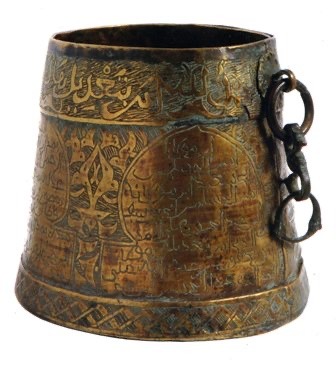
Almsgiving measure (Mudd) in the name of Abi El-Hassan El Merini. Tlemcen, Algeria. 1331-1348 CE.
Musée National des Antiquités & des Arts Islamiques (National Museum of Antiquities and Islamic Art) in Algiers, Algeria.
#National Museum of Antiquities and Islamic Art#Musée National des Antiquités & des Arts Islamiques#algeria#1300s#Algerian#Algerian history#art#culture#history#medieval history#medieval#Middle Ages#north africa#Africa#North African history
17 notes
·
View notes
Text
Same-Day Private Tour Guide India Company Car Tour of Delhi
Overview of the Same-Day Delhi Tour
Overview of the Tour Benefits of Selecting a Private Vehicle Tour Arranging Your Day Trip to Delhi
The Best Time to Begin the Tour What Your Private Guide Will Entail Famous Landmarks on the Route
Qutub Minar: An Architectural Wonder; Red Fort: A Historical Marvel; Cultural Experiences
Jama Masjid: Peaceful Spirit Chandni Chowk: A Gastronomic Odyssey Contemporary Wonders and Verdant Areas
India Gate: An Honor to Warriors Lokhi Gardens: A Calm Haven for Art and Museums
National Gallery of Modern Art: Modern Perspectives National Museum: An Overview of India's History Purchasing and Recreation
Connaught Place: A Meal and Retail Mecca Dilli Haat: Customary Handicrafts and Foods to Cap Off the Day
Thoughts on a Successful Day: Going Back to the Beginning Ideas for an Exceptional Tour of Delhi
Tips and Advice for Maintaining Comfort and Hydration in Cultural Settings Conclusion
The Memorable Adventure of Driving Through Delhi Frequently Asked Questions After the End
Overview of the Same-Day Delhi Tour
Taking a car tour of Delhi on the same day, arranged by the Private Tour Guide India Company, provides a close-up and thorough look around the nation's capital. In addition to ensuring comfort and convenience, this tailored experience offers comprehensive insights into Delhi's rich history, culture, and contemporary energy.
Organizing Your Day Trip to Delhi
It's best to start early in the morning to get the most of your trip and have time to see more sights before the day ends. Your tour will be customized by your own guide based on your interests, making your trip through Delhi's streets unforgettable.
Famous Landmarks on the Route
Red Fort: Start your journey with the magnificent Red Fort, an example of Mughal architecture and a representation of India's illustrious past.
Qutub Minar: After that, be in awe of the majestic Qutub Minar, which is home to elaborate Islamic calligraphy and design and is recognized as a UNESCO World Heritage Site.
Cultural Encounters
Jama Masjid: Take in the serene atmosphere of one of India's biggest mosques, a magnificent example of Mughal construction.
Chandni Chowk: Experience the pulse of Delhi by visiting Chandni Chowk, where you can indulge in regional specialties and take in the vibrant market atmosphere.
Green Spaces and Contemporary Marvels
India Gate: Honor the valor of Indian soldiers by paying your respects at this military memorial.
In the middle of the bustling metropolis, Lodhi Gardens provides serene surroundings and ancient graves.
Museums and Art
National Museum: Dive into India's past with its vast array of antiquities at the National Museum.
Explore India's modern art scene with pieces by well-known Indian painters at the National Gallery of Modern Art.
Purchasing and Recreation
Connaught Place: This financial and business center is ideal for both foodies and shoppers.
Dilli Haat: Handicrafts, fabrics, and cuisines from all across the nation can be found at this traditional Indian market.
Closing the Day
After the trip comes to an end, take some time to think on the day's events, which have been enhanced by your private guide's insights and stories. Then, enjoy a comfortable return to your starting place.
Ideas for an Exceptional Tour of Delhi
Wearing comfortable attire, staying hydrated, and honoring local customs will all contribute to a better Delhi trip experience. You can learn useful advice from your guide to go around the city like a local.
In summary
Discovering the essence of one of India's most intriguing cities—from its historical monuments to its colorful streets—in the comfort of a private tour is made possible with a same-day automobile tour of Delhi.
FAQs Following the Wrap-Up
Which season is ideal for visiting Delhi?
The weather in Delhi is pleasant from October to March. Is it possible to tailor the tour to fit particular interests?
Absolutely, the tour can be customized by the Private Tour Guide India Company to fit your tastes and areas of interest. What is the duration of the tour?
The tour typically lasts 8 to 10 hours and covers the schedule for a whole day. Does the tour include meals?
Although meals are not usually included, your guide will suggest great restaurants in the area. Is there a clothing code when going to places of worship?
Yes, protecting one's knees and shoulders when attending places of worship is advised.
book with us : https://privatetourguideindia.com/booking/same-day-agra-tour-by-car-from-delhi/
0 notes
Link
#AlÁndalus#AncientArt&ArchitectureinSpain#HiddengemsinSpain'scities#MadridSpain#Medievalart&architectureinSpain#MuseumsinMadrid#NationalArchaeologicalMuseumofSpain
0 notes
Text
New York City’s Tourist Attractions - Big and Small

New York City (NYC) is the quintessential American metropolis, offering visitors a cornucopia of diversions. Measuring approximately 301 square miles, NYC is a bonanza of financial, cultural, fashion, educational, research, and political activity. This compact city, with an estimated population hovering over 8.3 million, is an international tourist destination offering visitors big and small attractions.
NYC was named after the Duke of York (King James II of England) in 1664. Before its settlement, NYC was home to Algonquian tribes (including the Lenape). During colonization, the Portuguese, English, and Dutch (credited with naming Wall Street) were the first to make their mark on the city. Since its settlement, the city's long history of immigration from countries worldwide has left an indelible mark on the city's architecture, art, food, and culture.
This influx of people from every continent is probably best represented in the city's most apparent landmark, the Statue of Liberty. A UNESCO World Heritage site, the Statue of Liberty was a beacon for immigrants arriving in the country during the 19th and 20th centuries. Tourists can view this landmark from various areas in Manhattan, including the High Line and Battery Park. Travelers can also visit the monument's crown by climbing the 162 stairs to the top and then tour Ellis Island's National Museum of Immigration. The museum features heirlooms and artifacts belonging to immigrants who arrived in the US through Ellis Island.
Another big museum in NYC is the Museum of Modern Art, which embodies pop culture and 20th-century history. Here, visitors can see works from artists and creators worldwide. Painters installed at MOMA at one time or another include Pablo Picasso, Vincent Van Gogh, Salvador Dali, and more modern artists such as Andy Warhol.
NYC has several museums, including the Metropolitan Museum of Modern Art, another UNESCO Heritage Site. Also known as the MET, the museum features artwork from around the world. Past collections have included art from Egypt and classical antiquity. The museum has a permanent Greek, Roman, Egyptian, and Islamic art collection.
Most of the city's various museums have entrance fees. However, tourists can also enjoy visiting places that are free of cost, such as Central Park and Brooklyn Bridge. While many associate Central Park with Manhattan, the park runs through other parts of the city. Visitors can tour the Bethesda Fountain and the Mall to see centuries-old trees blanketing the area. Other notable places to relax include the Conservatory Garden and Shakespeare Garden. The park also contains the Billy Johnson and the Heckscher Playgrounds for families traveling with children.
Additionally, the Brooklyn Bridge is a freebie that allows tourists to visit one of the country's historic landmarks. Noted for its engineering, the structure is one of the country's oldest suspension bridges and runs over the East River, connecting Manhattan with Brooklyn and the Financial District with Chinatown. Visitors can also enjoy Brooklyn Bridge Park, which was once an industrial district and a transportation depot for immigrants. The park contains promenades, playgrounds, basketball courts, a roller skating rink, gardens, and six piers along the riverfront.
Finally, those who want to view the architecture of NYC in its earlier days should visit the Grand Central Terminal. Upon entering, the visitor will see the building's neoclassical architecture. Once inside, marble floors, nickel and gold-plated chandeliers, and a sky-themed ceiling transport the person to another time. While it costs nothing to enter, visitors can dine at its upscale and moderately priced restaurants and shop at its European-style market, the Grand Central Market, and some of its pricey stores.
0 notes
Note
{{ History asks! 4, 7, 8, 10, 11, 12, 14, 16, 23, 24, and 29? I've seen a lot of historical fashion and photography on your blog, but I don't know if that's a Passion^tm or a passing appreciation.
4. Favourite historical era?
Tough call, but in recent years I've been very interested in the 1930s, 1940s, and 1950s, particularly the social/cultural history aspects that most ~WWII historians~ give short shrift.
7. Historical dressing, uniform, or costume?
I do like 30s/40s/50s dress, as well as Victorian dress and certain stages in the development of traditional Japanese dress (although unfortunately Heian court wear does very little for me to look at even though the concepts behind it are really interesting). I wouldn't say it's my main focus as an historian--that's religious history--but I'm passionate enough about it to more or less keep up conversations with my friends @absynthe--minded and @marzipanandminutiae, both of whom do specialize in fashion history.
8. What is the last thing you have read, listened to, or spoken of with historical reference?
I'm reading a book as we speak (The Golden Enclaves by Naomi Novik) where the narrator recently discussed the contemporary-history fun fact that Dubai is built on indentured labor.
10. What pieces of art (i.e. paintings, sculpures, lithographies, etc.) related to history do you like the most?
Ooh, extremely broad question. There's a painting in the Vatican museums called "The Triumph of History over Time" whose title I love, but the picture itself isn't anything particularly special. There's also a bust of Emperor Vespasian at the archeological museum in Naples that I'm especially fond of because he looks exactly like an aging, chubby, glad-handing "retail politician" today. Some things never change!
11. Have you ever participated in reenactment? What it was like?
Not yet!
12. Would you take part in reenactment? In what era and as whom?
Watch this space.
14. Why are you are interested in history?
I have a nostalgic temperament and grew up in a very history-rich area by American standards. It's also an interest that my late grandfather had and I was very close to him; part of my semi-focus on WWII is that he was a Pacific Theater veteran.
16. Do you own some historical item (e.g. coin, clothing, weapons, books, etc.) If yes, which one is your favourite?
I own quite a few antiques, yes. My favorite is an honest-to-goodness piece of eight (Spanish milled dollar) that I found at an antique shop in Ship Bottom, New Jersey for twenty or thirty dollars, a steal even then, when I was thirteen or fourteen years old. I misplaced it somewhere in my parents' house years ago, though, so my favorite antique of whose whereabouts I'm currently certain is a 1940s rayon crepe dress that I bought from a vintage clothing dealer I know.
23. What’s your favourite historical song or song containing historical references?
I'm not sure how to interpret this question; sorry!
24. Who do you consider to be one of the most underrated historical figures?
Emperor Antoku is underrated among Japanese rulers because he's one of the very few who never did anything reprehensible, seeing as he was killed by his grandmother to avoid capture at the Battle of Dan-no-ura when he was six years old.
29. Are there any great historical mysteries that you are interested in?
Wallace Fard Muhammad, the founder of the Nation of Islam. We know nothing about him for certain before or after his work setting up the religion in Great Depression-era Detroit, and what's known inconclusively, or suspected, has a ton of inconsistencies. He was born in Oregon, or Afghanistan, or New Zealand, or somewhere else; he lived in North Carolina, or California, or both, before showing up in Detroit; he was a restaurant manager, or a carny, or both, by occupation...you get the idea.
I’ve seen plenty of “Tumblr Ask Challenges”, but none involving history. What a shame…
4 notes
·
View notes
Text
[Image description 1: Excerpt that reads: "Before the war in 1948, the Department of Antiquities that had been established by the British Mandate was shared between the Mandatory territories of Palestine and Jordan. British, Arab and Jewish employees of the Department worked together on instituting archeological research in the Palestine area. After 1948, Jordan gained control over the Palestine Archaeological Museum in Jerusalem and the Department of Antiquities headquarters, and Israel, which could no longer access these archaeological institutions, founded a new Department of Antiquities and Museums. In 1967, the Six-Day War between Israel, Palestine, Egypt, Jordan, and Syria ended with Israel gaining control over more territory, including Gaza, the West Bank and Jerusalem. Israeli troops entered the Palestinian Archaeological Museum without military reason, and held Arab curators and employees at gunpoint. The museum was taken by the Israeli government and renamed the Rockefeller Museum. The Israeli Department of Antiquities headquarters was reinstated there. The Palestine Museum, also in Jerusalem, was taken and renamed the Israel Museum. This Israeli seizure of the museum, and all the material in it, violated the 1954 Hague Convention which stated that "seizure of an enemy's property is forbidden during war". The famous Dead Sea Scrolls were removed from the Palestinian Archeological Museum and moved to the Israel Museum. The Scrolls traveled to Toronto for an exhibition at the Royal Ontario Museum in 2009, and Palestine and Syria petitioned for them to be seized under disputed international law. This petition was dismissed and the exhibition continued, although a later exhibition in Germany was cancelled. The Israeli seizure of Palestinian museums and cultural sites prevents Palestinian financial gain from tourism, a major industry in the Holy Land. The renaming of significant museums and historical sites as "Israeli" seeks to remove Palestine from the historical record. A major example of this is the Umayyad Dynasty site of Hisham's Palace in Jericho, an extremely valuable site for Islamic archaeology. Its large-scale floor mosaics and figural sculpture are unique in Islamic art. Archaeological material and architectural sculpture from the site was displayed at the Palestine Archaeological Museum until this was taken and renamed the Rockefeller Museum in 1967. The Islamic sculptures, reliefs and other material are now under the illegal ownership of Israel. The Ibrahimi Mosque in Hebron is another of many Islamic cultural sites officially recognized as an Israeli national historic site. While this title could be read as inclusive of Arab history in the Israeli historical narrative, it does this in a way that misidentifies significant sites of Palestinian heritage as Israeli, and restricts Arab access to these sites that are deemed Israeli national property. Limiting Arab Muslims' passage to significant Islamic sites like this one prevents knowledge of Palestinian Islamic history, manipulating interest and understanding about Arab history. Young" The excerpt ends.]
[Image Description 2: Excerpt that reads: "In 1948, while Jewish settlers flooded in, 90% of Palestinian Arab Muslims and Christians were exiled and forced to leave their homes and most belongings behind. Refugees fled to Gaza and the West Bank, or to Egypt, Jordan, Syria, Lebanon and other countries. The Absentee's Property Law of 1950 empowered Israeli authorities to "seize all the movable and immovable property of Arab or Palestinian residents of the occupied areas". "Abandoned" homes and properties were taken along with their contents, including personal objects like clothing and family heirlooms. Villages were destroyed and covered by pine forests by the Jewish National Fund, as pine trees were reminiscent of the forests of Europe. New Jewish settlements were built and are still being built on stolen Palestinian land, and Palestinian homes were taken over by Jewish settlers.
Under the law permitting Israeli authorities to seize all property of Palestinian "absentees", generations of Palestinian heritage was looted and destroyed. Palestinian textiles, which were handmade by local women, were deeply personal and individual to the maker. Palestinian embroidered "tatreez" dresses (thobs) were carefully made by women over several years starting in late childhood to prepare for married life. The tatreez style of embroidery is thought to have begun around the 3rd millennium BCE with the Canaanites. Dresses were different in each region, and elements of personal identity could be read from the embroidery, colours, fabrics, and motifs used. Women made these garments for their own personal wear and for their families, and almost never sold them. In 1948, most Palestinians were forced to leave behind personal belonging and bring only essentials with them. Photographs of Israeli settlers wearing Palestinian traditional clothing after 1948 show off the appropriation of Palestinian dress as "Israeli traditional clothing". Many thobs and other handmade textiles were sold or stolen, and a great number of Palestinian textiles have ended up in the British Museum collections, most of them having been acquired in the years just prior to or following the 1967 war. For example, a thob from Bethlehem in the British Museum collections was acquired in 1966 from the Church Missionary Society. Another example of a tatreez chest panel from a thob was acquired in 2010 but was purchased from an Israeli who bought it in East Jerusalem in 1967. Tareez was never meant to be produced for sale and would likely not have been willingly sold or gifted unless in times of duress. Tatreez is now done by women in refugee camps and sold in Israeli souvenir stores in order to generate some income for displaced Palestinian women. After the Nakba, the regionally specific colours and patterns that had indicated one's village of origin began to be used by all Palestinian embroiders regardless of hometown, as the displacement of Palestinians joined people from all over the country together in concentrated refugee camps. Thobs are a" The excerpt ends.]
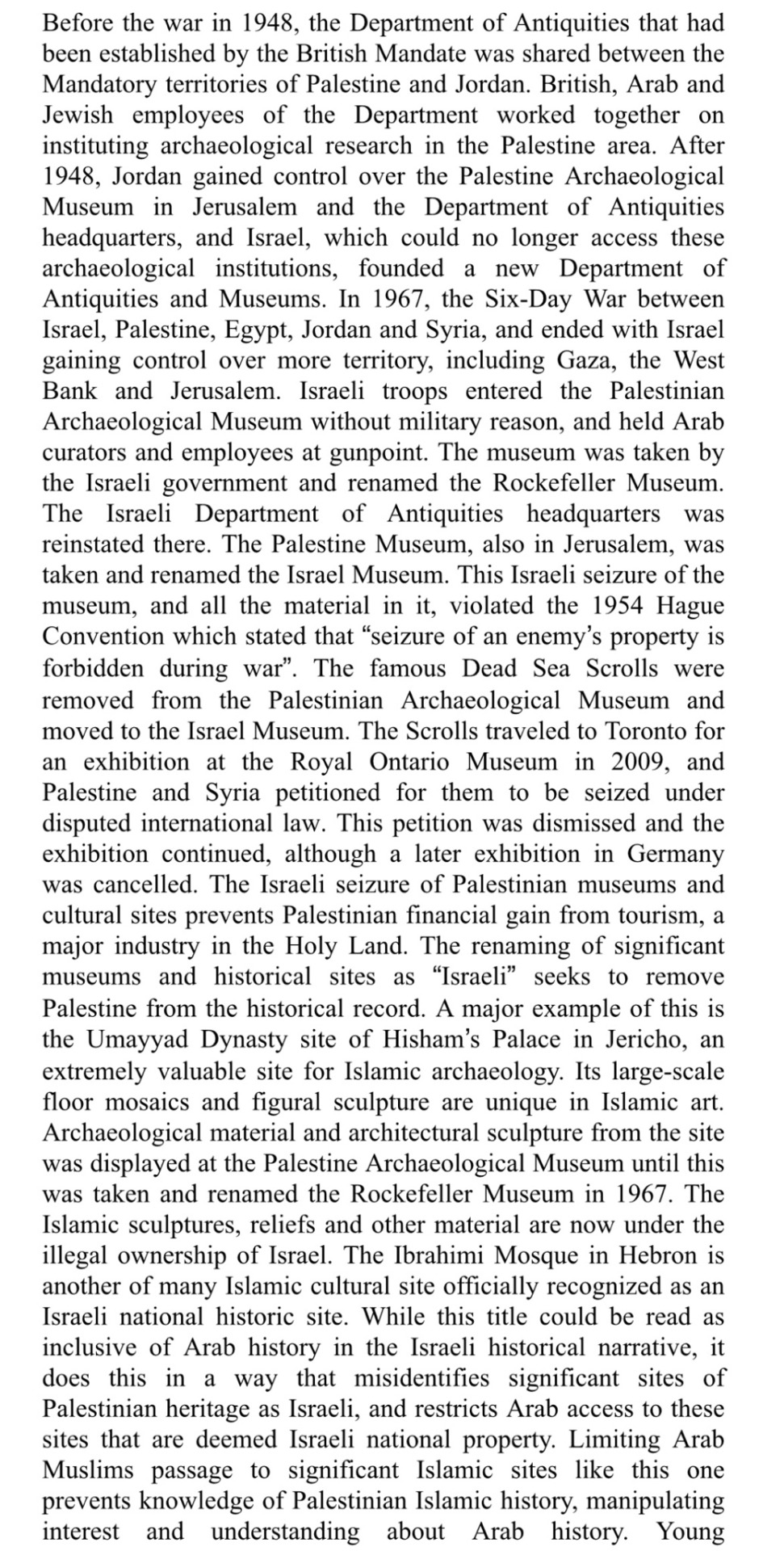
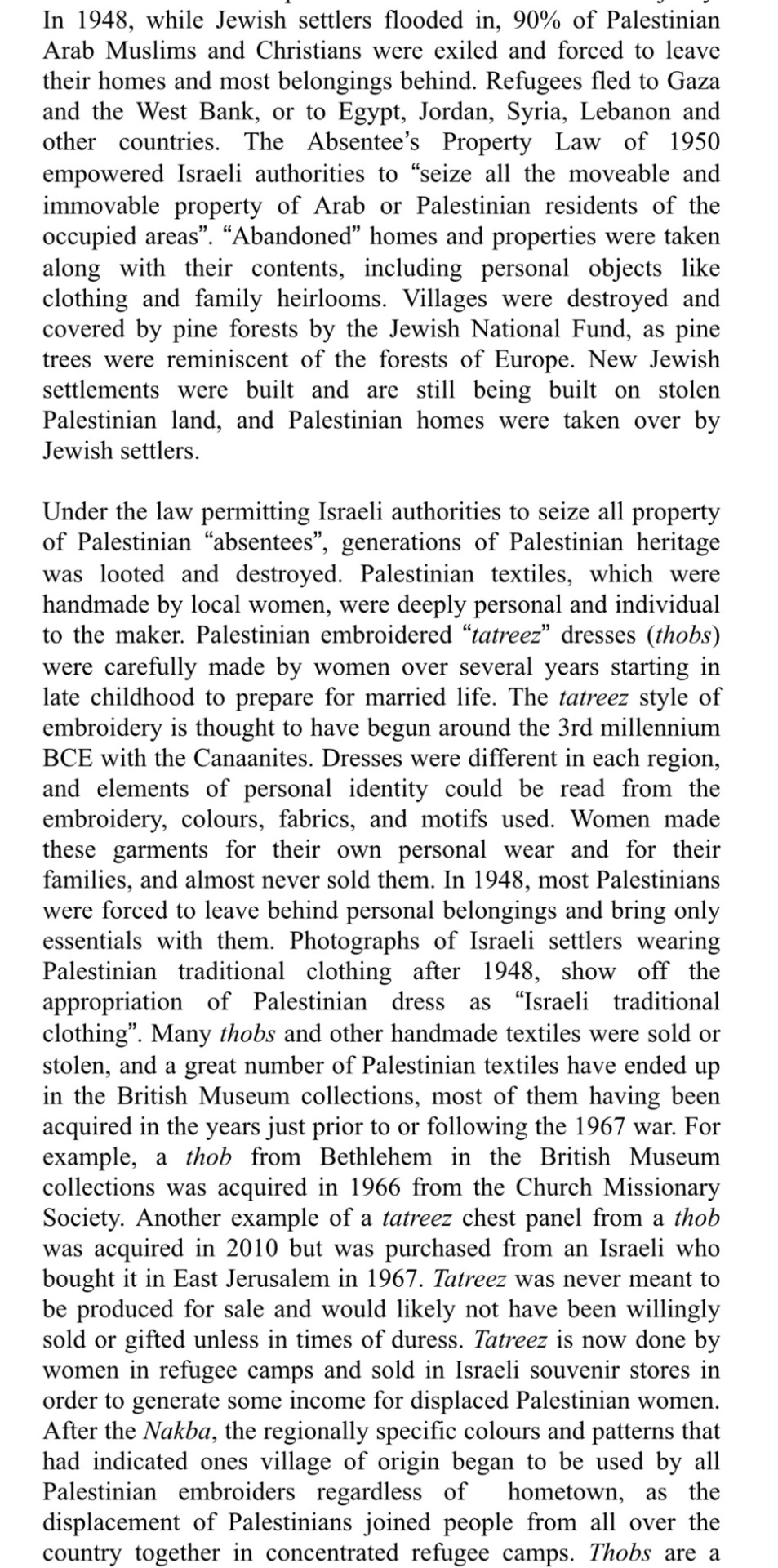
Looting material culture after the Nakba
28 notes
·
View notes